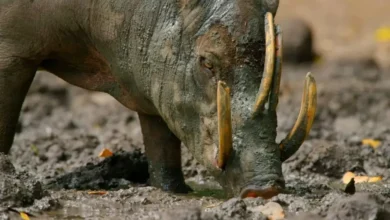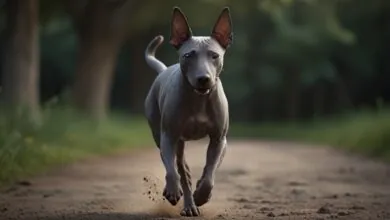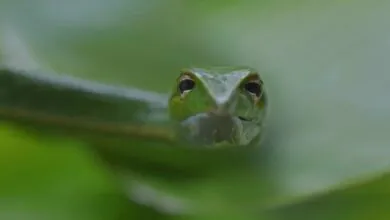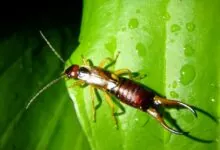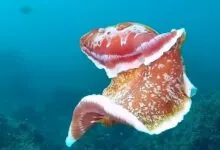Living with a Shih Tzu Dog: A Guide to Laughter, Laps, and Long Hair
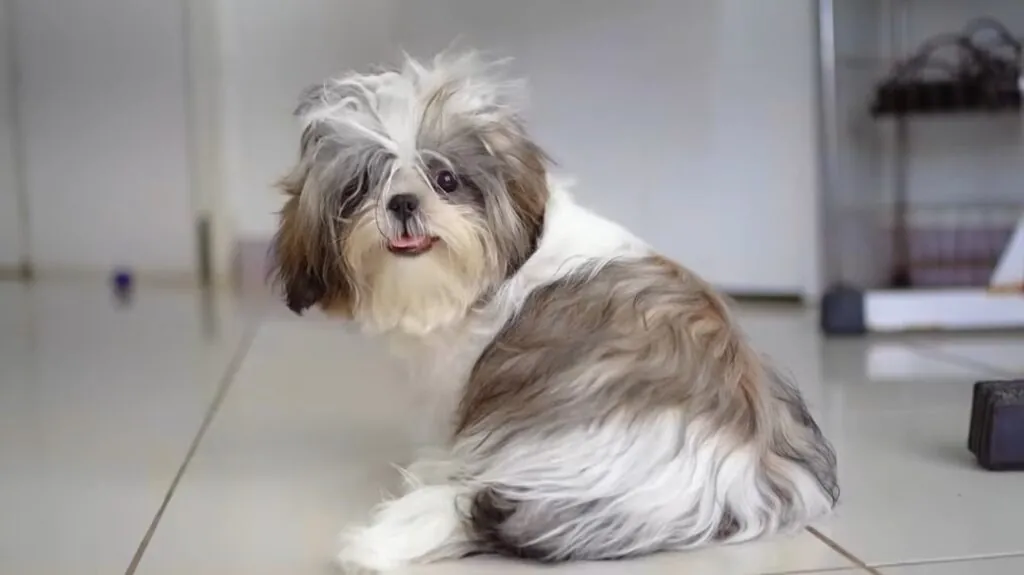
With lineage tucked into the chilly Tibetan mountains 2,000 years back, the signature double coat of the Shih Tzu dog was likely a cozy adaptation. Appreciated for their warmth, these mini creatures kept Chinese emperor’s toes toasty at bedtime. Bred by royal dog whisperers, the Shih Tzu’s roots are thought to weave together the Lhaso Apso and Pekingese.
Crossing the pond in 1928, they’ve since charmed their way into becoming one of the most popular toy dogs in the US and UK. Let’s dive into the unique aspects of the Shih Tzu’s realm.
| Kingdom | Phylum | Class | Order | Family | Genus | Scientific Name | ||
| Animalia | Chordata | Mammalia | Carnivora | Canidae | Canis | Canis lupus |
Origin and Evolution
Evolutionary History
In conjunction with Shih Tzu origin, most evidence points to Tibet, where they’re bred by monks around 2,000 years back in time. As per some genetic studies, their strong relationships with the Lhasa Apso and Pekingese, proposing potential cross-breeding or shared root within ancient Tibetan “Lion Dogs.”
Shih Tzu, esteemed by Chinese emperors from the Tang Dynasty forward, were pampered palace residents, with the Dowager Empress Cixi (1861-1908) being a prominent patron.
Genetic Composition and Diversity
While some concerns are present pertaining to potential health issues interlinked with brachycephaly, studies propose moderate to high genetic diversity within the breed.
Environmental Adaptations
The Shih Tzu’s double coat, in the annals of time, an adaptation to the harsh Tibetan climate, now offers warmth and shield in distinct environments. The shortened muzzle of the dog can result in breathing difficulties in hot or humid weather. Concerning Shih Tzu adaptations, they’re astonishingly adaptable to different living situations albeit their royal heritage.
Distribution and Population
Geographic Range
When it comes to the Shih Tzu distribution, they sport immense popularity in the US, ranking in the top 20 most popular breeds as per the American Kennel Club (AKC) in 2023. Moving to Europe, the UK and France set the pace with significant Shih Tzu populations.
Notwithstanding the fact that the breed’s roots lie in China, they’ve conquered the hearts of dog lovers across Asia, with prosperous populations in Taiwan, Japan and South Korea.
Population Dynamics
Albeit these cute creatures aren’t the fastest-growing breed, their population has typically encountered a steady boost in recent years, mirroring their lasting popularity.
Geography
| Continent(s) | Asia |
| Countries | Primarily China, also bred and found in many countries worldwide |
| Bio-geographical Realms | Palearctic (Temperate Eurasia) |
| Biome | Domesticated; primarily adapted to indoor environments |
| Climate Zones | Highly adaptable to various climates, but prefer temperate conditions |
Types of Shih Tzu
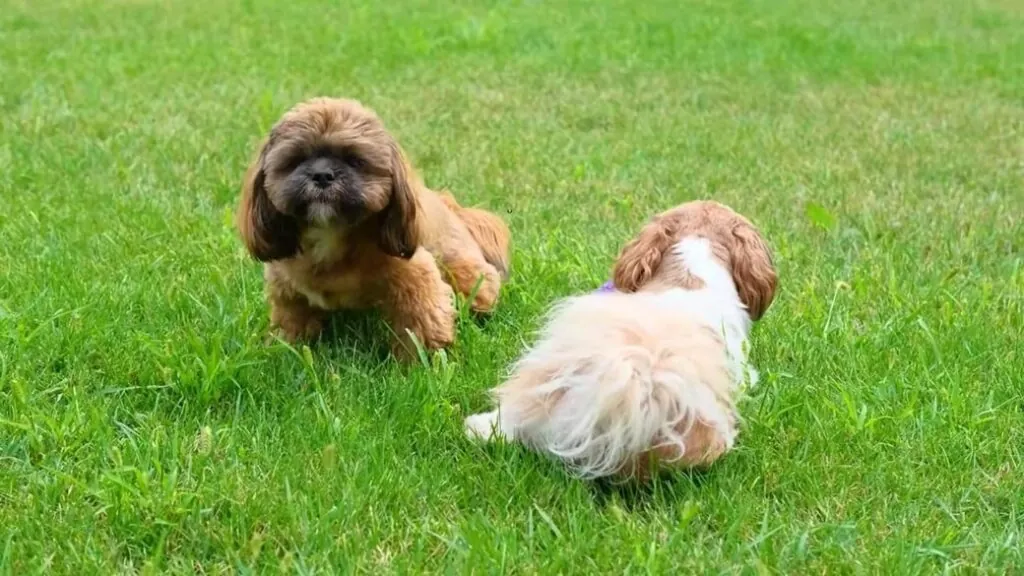
Though major kennel clubs, like the American Kennel Club, recognize solely one breed of Shih Tzu dog, there’re distinct varieties with respect to size, coat color and markings. Let’s dig deep into the Shih Tzu’s types.
By Size
By Coat Color
By Markings
5 Shih Tzu Facts
Appearance
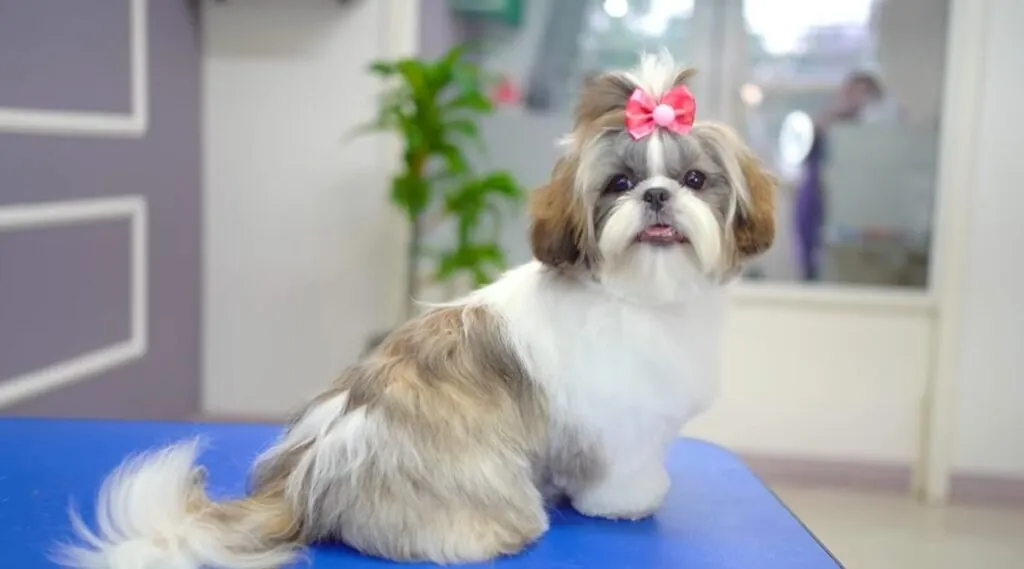
Physical Characteristics
Shih Tzu Anatomy
| Color(s) | Combination of white, black, brown, red, brindle, cream, silver, and gold. |
| Tongue | Pink, long, and lolling out slightly |
| Claws | Black, white, or brown, depending on coat color |
| Mouth | Broad and round, with prominent underbite |
| Jaw | Underjaw slightly wider than upper jaw |
| Teeth | Small and incisors can sometimes protrude due to underbite |
| Nose | Black, flat, and broad, with wide nostrils |
| Feet | Round and padded, with long fur between the toes |
| Skeleton | Similar to other small dog breeds, with delicate bones and a compact frame |
Life Cycles
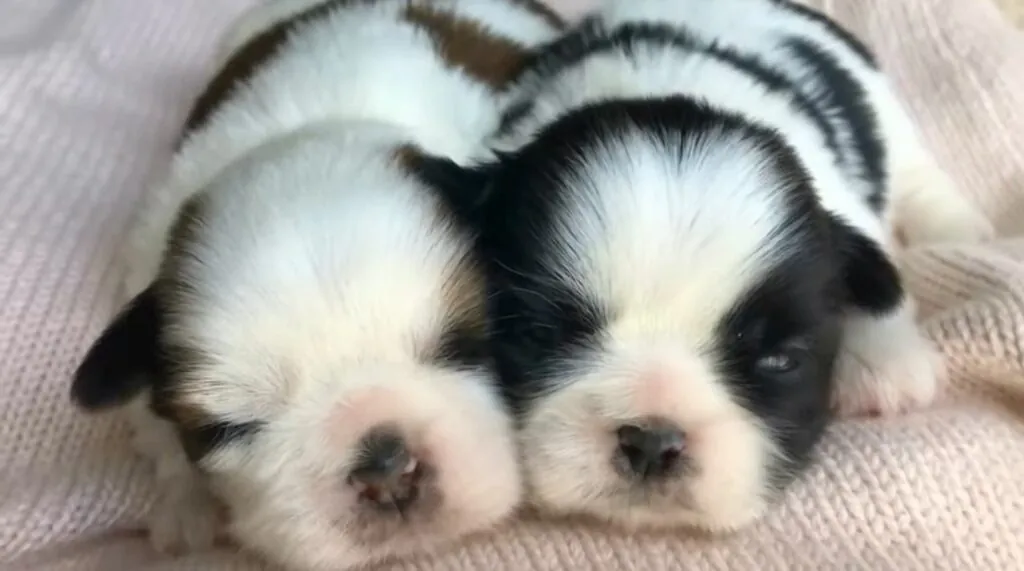
Reproductive Biology
In line with other dog breeds, the Shih Tzu dog is seasonal breeder, generally coming into heat twice a year, approximately 6 months apart. This “heat” period – when female Shih Tzu are receptive to mating – persists around 18 to 21 days. In terms of Shih Tzu litter size, they produce 3 to 5 puppies in average. There’s also a mashup of the Bichon Frise and Shih Tzu, giving rise to a cute teddy bear dog known as Zuchon.
Gestation Period
The moment breeding takes place, the magic of pregnancy takes hold. The Shih Tzu gestation period normally holds up around 58 to 63 days.
Life Cycle Stages
Shih Tzu Lifespan
This toy dog, renowned for its long, flowing coat and mischievous personality, enjoys a lifespan of 10 to 18 years. Astonishingly, a Florida Shih Tzu dog called Smokey holds the record for the oldest of its kind, having lived 23 years.
Reproduction
| Reproduction Season | Not seasonal, can breed year-round with proper heat cycles |
| Litter Size | Average of 3-5 puppies, with a range of 1-8 possible |
| Gestation Period | 58-63 days |
| Baby Carrying | Mother carries and nurses puppies for 8-10 weeks |
| Independent Age | Puppies fully weaned and ready for adoption by 12-14 weeks |
| Female Name | Lulu, Bella, Maya, Daisy, Lola, Coco, Sophie, Penny, Luna and Pepper |
| Male Name | Charlie, Oliver, Max, Bentley, Teddy, Milo, Cooper, Leo, Duke and Rocky |
| Baby Name | Peanut, Mochi, Kiwi, Pip, Toby, Winston, Gus, Baxter, Scout and Gizmo |
Shih Tzu Dog Diet
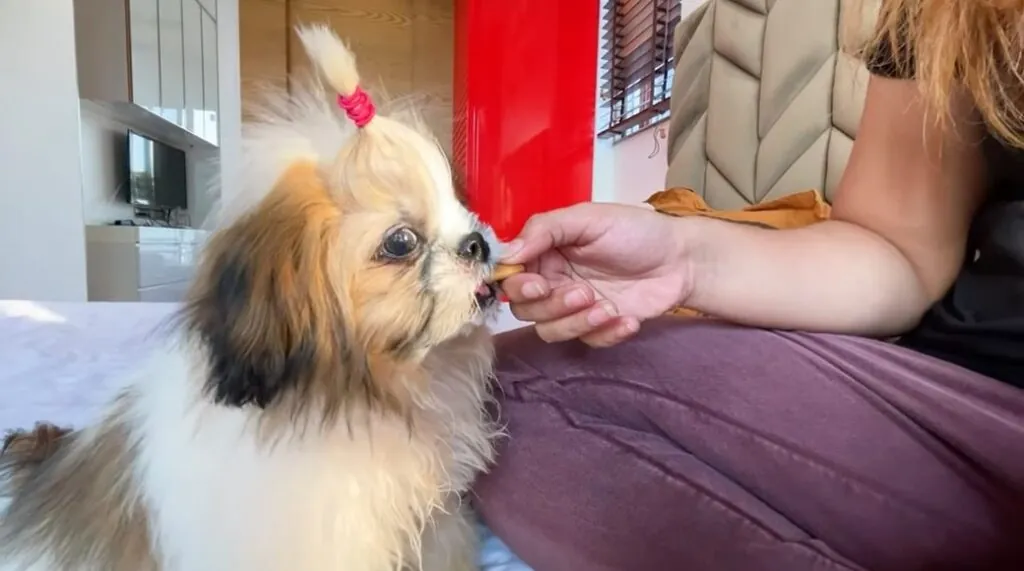
As for as Shih Tzu diet is concerned, they entail high-quality protein, healthy fats, and easily digestible carbohydrates to fuel their mischievous personalities. Here’s a dissection of the core nutrients:
Protein
Maintain approximately 25 to 30% protein content in their diet as it assists in building and maintain muscle mass, which is ultimately pivotal for keeping them active. Sources of protein can encompass lamb, chicken, beef, fish or eggs.
Fats
It’s the healthy fats that offer energy and let your Shih Tzu pet absorb needed vitamins and minerals. Aim for the Shih Tzu dog food that comprises omega-3 and omega-6 fatty acids – beneficial for coat and skin health.
Carbohydrates
Carbohydrates, undoubtedly, offer energy, but they should be confined in a Shih Tzu’ diet. Opt for intricate carbohydrates such as whole grains, sweet potatoes or brown rice over simple carbohydrates like corn syrup or white flour.
Cultural Significance and Symbolism
Since the Tang Dynasty (618-907 AD), their pampered lives infused them with regal symbolism in Chinese palaces. They’re regarded as guardians of the emperor’s fortune and happiness.
Honored in Tibetan monasteries, these toy dogs were thought to manifest the souls of monks. Their existence signified good luck and spiritual purity.
Shih Tzu as Pets
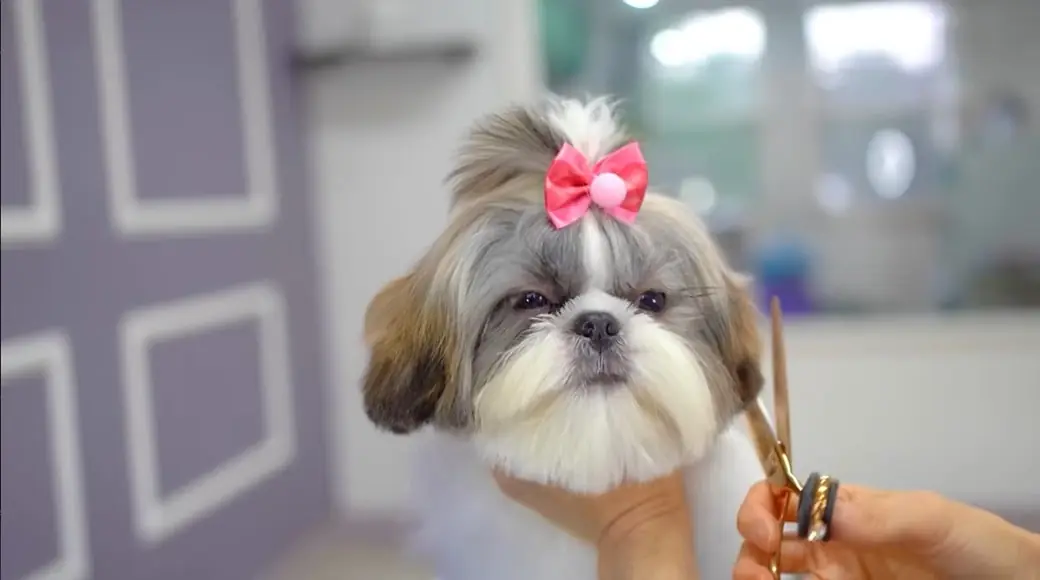
Pet Profile Overview
Size
Shedability
Trainability
Energy Level
General Health
Tendency to Chew
Family & Kid Friendliness
Barking
High
Dog Group
Toy
Male Weight
9-16 lbs
Female Weight
9-16 lbs
Hypoallergenic
N/A
Exercise Needs
Low
Bred Cost to Own
$2,000 to $10,000
Separation Anxiety
High
Preferred Temperature
Average climate
Friendly with Other Dogs
Moderate
Temperament
In conjunction with the Shih Tzu temperament, they prioritize the cozy confines of home. They’re both stubbornly independent and affectionate, requiring attention with an endearing, if once in a blue moon insistent, charm. You’re to breed merely for companionship for they lack the instincts for guarding or hunting. The very undivided focus can reflect as a severe yearn for attention.
The irresistible urge to be a lap dog is among their conspicuous traits, basking in the warmth of human company. In addition, they’re relatively quiet – another delightful characteristic – making them adaptable to a plenty of living situations.
Maintenance
Speaking of the Shih Tzu maintenance, they entail regular baths for hygiene and comfort. Ensure a monthly bath or every 3-4 weeks, built upon their activity level. Notwithstanding the coat length, Shih Tzu grooming is pivotal on daily basis. The long-haired companions entail daily attention to prevent matting, while medium-length fur requires brushing every other day.
Exercise
Despite their energetic personalities, adult Shih Tzu are gratified with moderate exercise. They’ll readily frolic in the house or yard – their mischievous bursts fueled by daily walks. In terms of the Shih Tzu exercise, schedule two outings a day, each lasting 20-30 minutes to keep them physically and mentally fired up.
Training
Since their independent streak can surface later on, kicking off the Shih Tzu training early is essential. They’re most often than not titled “stubborn” in terms of housebreaking, so positive, consistent reinforcement techniques are key. Albeit they can learn striking tricks, note that they do march to the beat of their own drum. Here, enticing snacks can work wonders as motivators to make them learn new skills and master desired behaviors.
Care
The Shih Tzu adoption, certainly, brings immense joy, but also necessitates awareness – on the part of the owners – of their unparalleled needs, expressly Shih Tzu puppies. Their striking double coat demands regular brushing and grooming. Hold daily sessions with the right tools – consider fine-toothed combs and gentle brushes – to maintain that luscious fur.
Common Health Issues
Unique Characteristics
Forge a path through an intriguing journey as we unfold fascinating facts about Shih Tzus – truly captivating animals that start with S. Join us in shedding light on their remarkable rundown!
| Common Name | Shih Tzu |
| Other Name(s) | Lion Dog, Chrysanthemum Dog |
| Number of Species | 1 |
| Lifespan | 11-16 years |
| Weight | 4-7 kg (9-15 lbs) |
| Length | 20-28 cm (8-11 inches) |
| Predator | Larger dogs, birds of prey, wild animals in certain environments |
| Most Distinctive Feature | Long, flowing hair and flat face with prominent underbite |
FAQs
